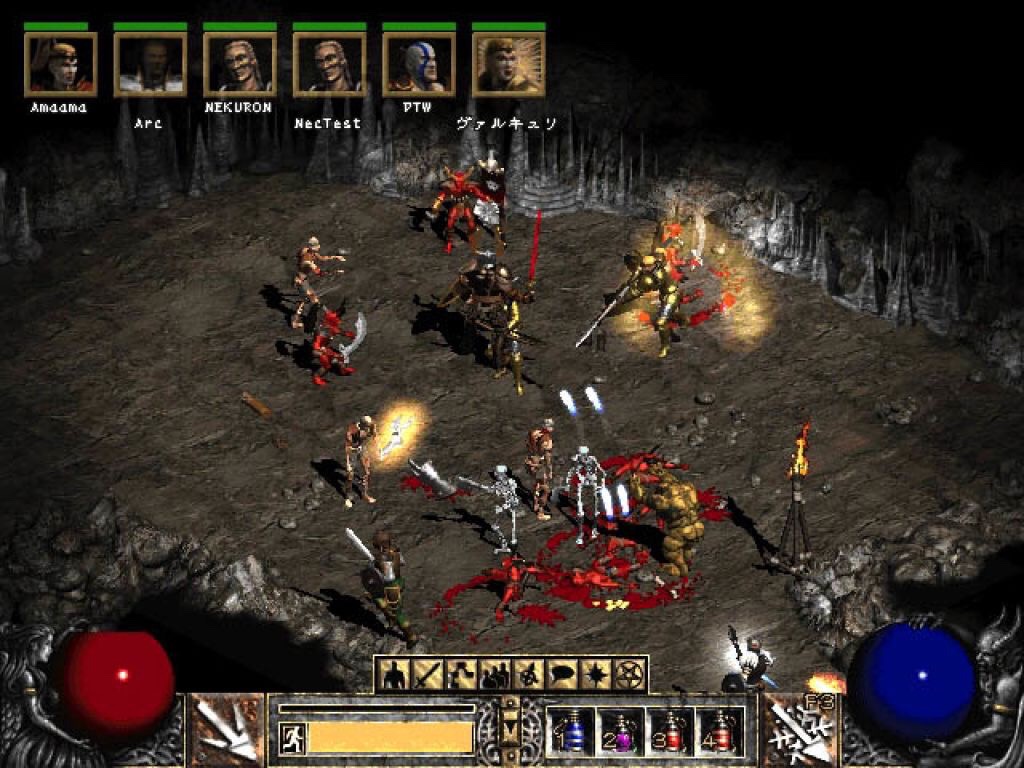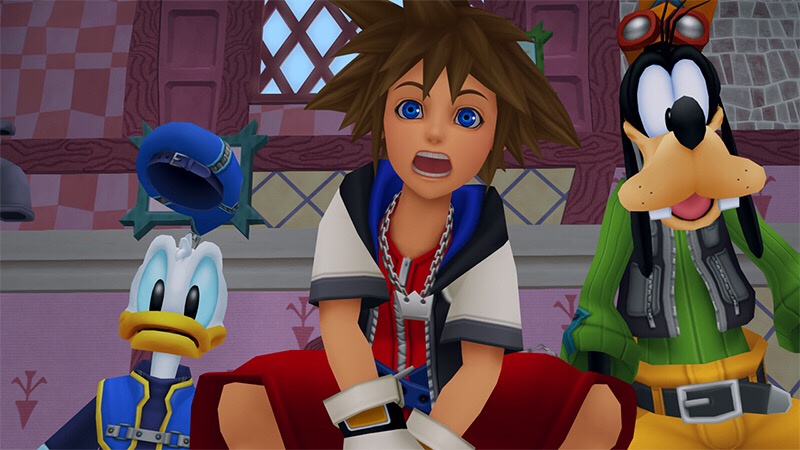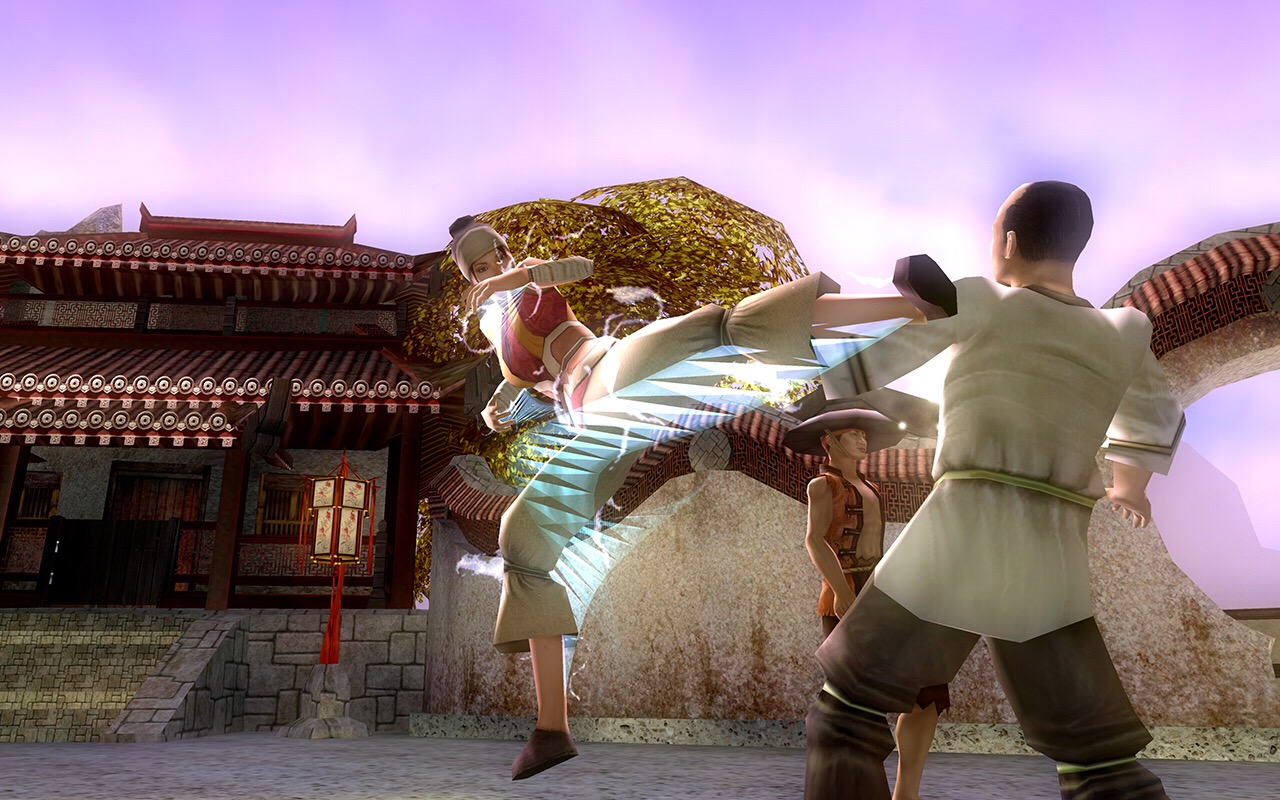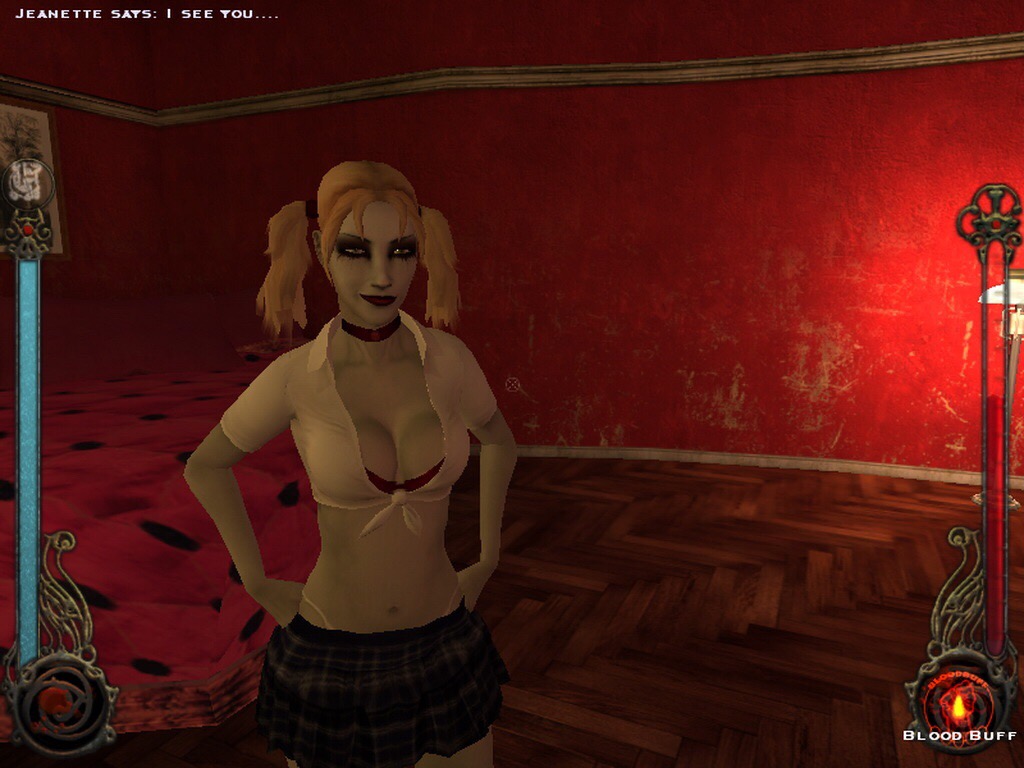 Hello, gentle readers, and welcome to the RPG Reload, the weekly feature where everything goes better with a good loot system. This week, we’re continuing our slow but steady crawl through the history of the action-RPG sub-genre. The last time we looked at this topic, we covered the late 1990s, perhaps one of the more significant periods thanks to the debut of Blizzard’s Diablo. Just how influential was it? Read on, friends. If you don’t already know, I have a feeling you will soon. Keeping in mind the general explosion of game releases from here on out, I’m only going to be covering a five-year span, and only the games I think are noteworthy. If I leave out your favorite, it might have just slipped my mind. Hold on to that hope!
Hello, gentle readers, and welcome to the RPG Reload, the weekly feature where everything goes better with a good loot system. This week, we’re continuing our slow but steady crawl through the history of the action-RPG sub-genre. The last time we looked at this topic, we covered the late 1990s, perhaps one of the more significant periods thanks to the debut of Blizzard’s Diablo. Just how influential was it? Read on, friends. If you don’t already know, I have a feeling you will soon. Keeping in mind the general explosion of game releases from here on out, I’m only going to be covering a five-year span, and only the games I think are noteworthy. If I leave out your favorite, it might have just slipped my mind. Hold on to that hope!
As the year 2000 approached, the action-RPG genre hadn’t really gotten any less messy so much as people had started to arbitrarily cut out some of the fuzzier overlapping games. For example, although the Elder Scrolls games featured real-time, action-based combat, their strong CRPG elements tended to pull them towards that genre label. Personally, I still consider them to be action-RPGs, but I won’t be mentioning further games in the series due to that perception. Certain strands of side-scrolling action-RPGs were also separated out thanks to the popularity of the Metroidvania label.
So far as most of the gaming population around this time was concerned, action-RPGs were either Diablo-style overhead click-and-loots or Ys-style third-person adventures. Certain exceptions were allowed for first-person games so long as they spent sufficient amounts of time in dingy dungeons or the like. Everything else tended to be considered to simply be of another genre, but with RPG elements. I’m going to be mentioning some of these edge cases as we go along, but generally only their debut installments. There are more than enough generally accepted examples of the genre to look at as it is.
When we look at the year 2000, there are three big stand-outs in the genre. The biggest of the lot is naturally Blizzard’s follow-up to their genre-defining hit, Diablo 2. As big as the first game had been, the second one ended up even bigger. With good reason, too. Not only was the game expanded in almost every possible way, the multiplayer was easier to use and even more exciting than before. Blizzard’s online service Battle.net had grown in leaps and bounds on the back of their RTS sensation Starcraft, and Diablo 2 reaped the rewards. Besides Diablo 2, there were several more games released following in the footsteps of Diablo. Of the bunch, only Nox is particularly worth mentioning, and just barely at that.
The other big 2000 PC release that loosely fits into this genre is the outstanding Deus Ex. Valve’s 1998 release Half-Life had started something of a sea change for the first-person shooter genre. Once all about delivering as much action and spectacle as possible, the genre was starting to show successes with different takes. Games like System Shock had earned plenty of critical accolades and proved to be cult hits over time, but Half-Life showed that you didn’t need wall-to-wall shooting to make a hit in the first-person arena. Warren Spector, Harvey Smith, and the rest of the team at Ion Storm who worked on Deus Ex provided another great example. Combining first-person action, RPG-like character progression, and some great opportunities for emergent gameplay, Deus Ex remains one of the most celebrated games of its time and genre.
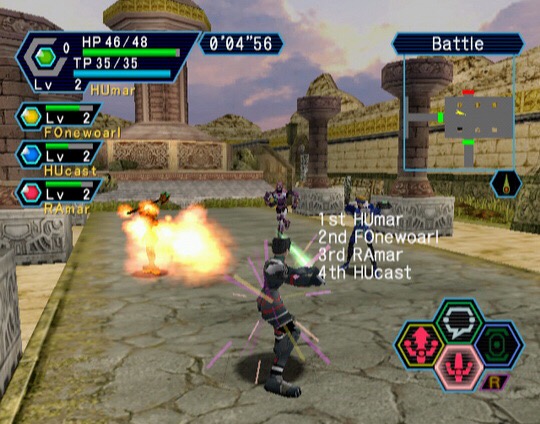
On the console side of things, there were big changes afoot. SEGA had launched their Dreamcast worldwide in the latter part of 1999, and Sony’s PlayStation 2 wasn’t far behind it. While the Dreamcast had a short life and seemed cursed to fail no matter how well SEGA handled it, the system still managed to play host to one of the more important console action-RPGs: Phantasy Star Online. An online multiplayer action-RPG with hints of Diablo about it, the game nevertheless carved out its own niche. Given the timing and features of both releases, it’s highly likely that Phantasy Star Online had some influence on the creation of Capcom’s hit series Monster Hunter. The game would later receive ports to PC, Gamecube, and even the Xbox. Aside from that, the Dreamcast also saw the release of an action-RPG based on The Record of Lodoss War. It was surprisingly decent for a licensed game.
The PlayStation 2 didn’t have as much time to get things cooking, given that 2000 was its launch year. Still, many players got some fun out of the American launch title Summoner. More significantly, a newly-formed developer named Level 5 released their first game in Japan just as the clock was running out on the year. Dark Cloud‘s art style earned it some ribbing for its similarity to a certain other action-adventure series, but it certainly proved to be in the right place at the right time. Level 5 followed it up a couple of years later with a less successful (but better) sequel before Square Enix changed the company’s future by hiring them to assist with Dragon Quest 8.
By contrast, 2001 didn’t have that many big hits. The Game Boy Advance launched and a clever Mega Man RPG with an action-based battle system called Mega Man Battle Network came through the doors not long after. In the usual Mega Man fashion, this game would receive near-yearly sequels until it had worn out its welcome in stores. The first couple were pretty exciting, at least. Diablo-mania finally hit consoles in a big way with the release of Baldur’s Gate: Dark Alliance. Rather than trying to fit a pretty complicated CRPG onto a platform ill-suited to handle it, the developers chose to make the console Baldur’s Gate a pretty open homage to Diablo. It was tons of fun and sold very well, proving that console gamers were just as receptive to that formula as their PC cousins.
Well, almost. Because looking at the PC platform in 2001, it’s nothing but a very good Diablo 2 expansion, a couple of other decent action-RPGs, and a handful of forgettable Diablo clones. Unlike the first game’s expansion, Lord of Destruction was developed by Blizzard North. It quickly became essential for every Diablo 2 player to own. Nihilistic’s Vampire: The Masquerade – Redemption attempted to bring the cult pen and paper game to digital life with middling results, while Gothic from German developer Piranha Bytes found more success with Gothic, a strong fusion of CRPG elements with third-person action combat. Its 2002 sequel was even better. Excellent games to check out if you somehow missed them.
Aside from Gothic‘s sequel, 2002 saw the release of two of the better Diablo-inspired games on PC. Dungeon Siege from Gas Powered Games was a fast-paced adventure with a huge, seamless world. The franchise would see a number of sequels and a few really terrible movies in the years to come. Larian’s Divine Divinity married Diablo-style gameplay to a lot of great CRPG elements. It too spawned a series, albeit one quite fond of reinventing itself. This year also saw the debut release of Arkane Studios. Arx Fatalis was a first-person game released on Xbox and PC that was inspired by Ultima Underworld. While it’s not exactly an all-time classic, it’s a solid enough game to get a thrill or two from.
The biggest action-RPG of the year ended up coming on home consoles, however. Square Enix and Disney’s Kingdom Hearts fused Final Fantasy with Disney’s characters to create a barely-intelligible money-making machine the likes of which had rarely been seen in the genre before. While the mechanics would be greatly refined over the course of the many subsequent releases in the series, the first game was basically a big old button-mashing tour of some of your favorite Disney animated films. If we’re going by the common view of the genre, the Kingdom Hearts franchise is the most successful action-RPG series of all-time on consoles. The other noteworthy release this year was Shining Soul for the Game Boy Advance. After a very messy break-up with the development team behind all of the previous Shining games, SEGA decided to revive the series as an action-RPG franchise. Yes, I don’t know either.
There wasn’t much interesting going on with the Western side of things in 2003, but it was a really weird year for action-RPGs from Japan. After many years of being dormant, Falcom’s Ys series made a comeback with Ys 6: The Ark of Napishtim. Originally launched on PC, it would make its way to home consoles worldwide in the next few years. It was a nice return to form after a somewhat disappointing fifth entry in the franchise, and its engine would serve as the basis for something even better quite soon. Gamecube owners had a monkey’s paw wish granted as Final Fantasy made its return to Nintendo consoles with Final Fantasy: Crystal Chronicles. It’s a good multiplayer action RPG, but its heavy requirements for that mode combined with it not being the sort of Final Fantasy game people were hoping for kept it from doing as well as it could have.
The Game Boy Advance was the new home of 2D sprite-based gaming, and plenty of developers were taking advantage of its healthy software market. Square Enix released a somewhat misguided remake of the original Mana game, Final Fantasy Adventure, under the title of Sword of Mana. Like nearly every Mana game that came out after the Super NES era, it was not quite what people were looking for. Konami took the whole portable nature of the console a bit seriously with Boktai: The Sun is in Your Hand. The cartridge had a solar sensor that you needed to expose to sunlight in order to charge the main character’s weapon. No sun? I hope you’re good at stealth, then. An odd element to include, to be sure, but the game itself was quite fun. Speaking of odd, I’d be remiss if I failed to mention Drakengard, the PlayStation 2 action-RPG that would eventually lead to this year’s console hit Nier: Automata. While the gameplay mechanics sometimes leave a bit to be desired, Yoko Taro’s stories and meta-elements were pretty amazing from the start.
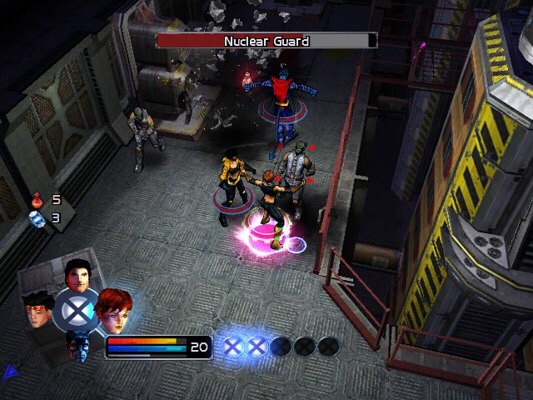
The following year was a rich one for action-RPG fans. Dark Alliance 2, Champions of Norrath, The Bard’s Tale, Fallout: Brotherhood of Steel, and X-Men Legends all offered up their own heaping helpings of Diablo-style action on consoles and PCs. Those with computers could also enjoy the very competent Sacred. If you weren’t looking for a Diablo clone, you might have been interested in Vampire: The Masquerade – Bloodlines. It would take a while for the game to get patched into a reasonably playable state, but Troika’s swan song is definitely one to remember. It’s another first-person game with heavy CRPG elements woven in, but it released, unfinished, at just about the worst possible time, sinking its developer.
As far as console action-RPGs went in 2004, the only really big one was Fable from Lionhead Studios, which launched on the Xbox in September of that year. While the game got a lot of criticism due to its designer Peter Molyneux overhyping it (as usual), what was there was very enjoyable. On a console with very little support from Japan, quality RPG experiences were fairly uncommon. Fable was probably the best exclusive action-RPG the platform would see. SEGA would continue its baffling insistence on making mediocre action-RPGs in the Shining series with Shining Tears for the PlayStation 2. Perhaps wisely, they hired a well-known adult artist to provide character designs and artwork for the game. Sure, the game didn’t sell well, but it did a nice job of selling merchandise. Speaking of which, 2004 also saw the Kingdom Hearts series get its second game in the form of the Game Boy Advance Kingdom Hearts: Chain of Memories. It was an okay title that established the framework for a far better game later from the same developer.
We might as well call 2005 the year of the sequel because there was a bucket-load of them. On consoles, Kingdom Hearts 2 arrived with Tron and Pirates of the Caribbean in tow. The Shining series saw yet another installment called Shining Force Neo, which in spite of its name was not a TRPG. Falcom used the Ys 6 engine to create Ys: The Oath in Felghana and Xanadu Next, a fine pair of installments in their respective series. Dungeon Siege 2, X-Men Legends 2, and Champions: Return to Arms represented the Diablo-like action-RPG to varying degrees of success.
Two well-established RPG houses took the opportunity to release their final games on the respective consoles they had been working on for the past few years. Level 5 bid farewell to the PlayStation 2 with Rogue Galaxy, a sci-fi themed action-RPG that is typical of the developer’s output in most regards. Canadian developer Bioware had made good bank on the Xbox with Star Wars: Knights of the Old Republic, and as such had the support to try something a little different from their usual fare. Jade Empire has its share of flaws, but in as far as it shows Bioware splashing around a bit in the action-RPG pool, it’s informative of the company’s future direction in many ways.
While we’ve sped through these years, the first five years of the new millennium were critical ones for both console and PC gaming. On the console side, more and more Western PC developers were trying their hand at the market and finding good results. The PlayStation 2 was quite literally the highest-selling console of all-time (a record that will likely stand forever), and while the Xbox didn’t have big numbers, its creator was being generous with its big checkbook. By contrast, the PC gaming market was going through some difficult years. A few big winners were soaking up most of the dollars in the market, retail presence was shrinking, and Microsoft’s new-found interest in consoles took a lot of their attention away from Windows gaming.
Of course, there was a revolution in the works that would not only see the PC market revived, but also made stronger and more appealing to publishers worldwide than ever before. Valve had launched an alternative to retail sales for distributing software and tied it to the hotly-anticipated Half-Life 2. As the sands ran out on 2005, the company signed their first deal with an outside publisher to distribute their games. Yes, help was on the way for PC gaming, while consoles and handhelds alike were about to get smacked upside the head by a lesson action-RPG developers had learned all too well: simplicity sells.
We’ll pick up that thread in a few weeks, however. What about you? What were your favorite action-RPGs from this period? I had to skip over a lot more this time than in previous chapters, so I’d be happy to see some comments making cases for things that I missed. The August 2017 RPG Reload Play-Along of Chrono Trigger is coming to a close, and next week we’ll be looking at our September game. What will it be? You’ll have to come back next week and see for yourself. Thanks for reading!
Next Week’s Reload: The September 2017 RPG Reload Play-Along

